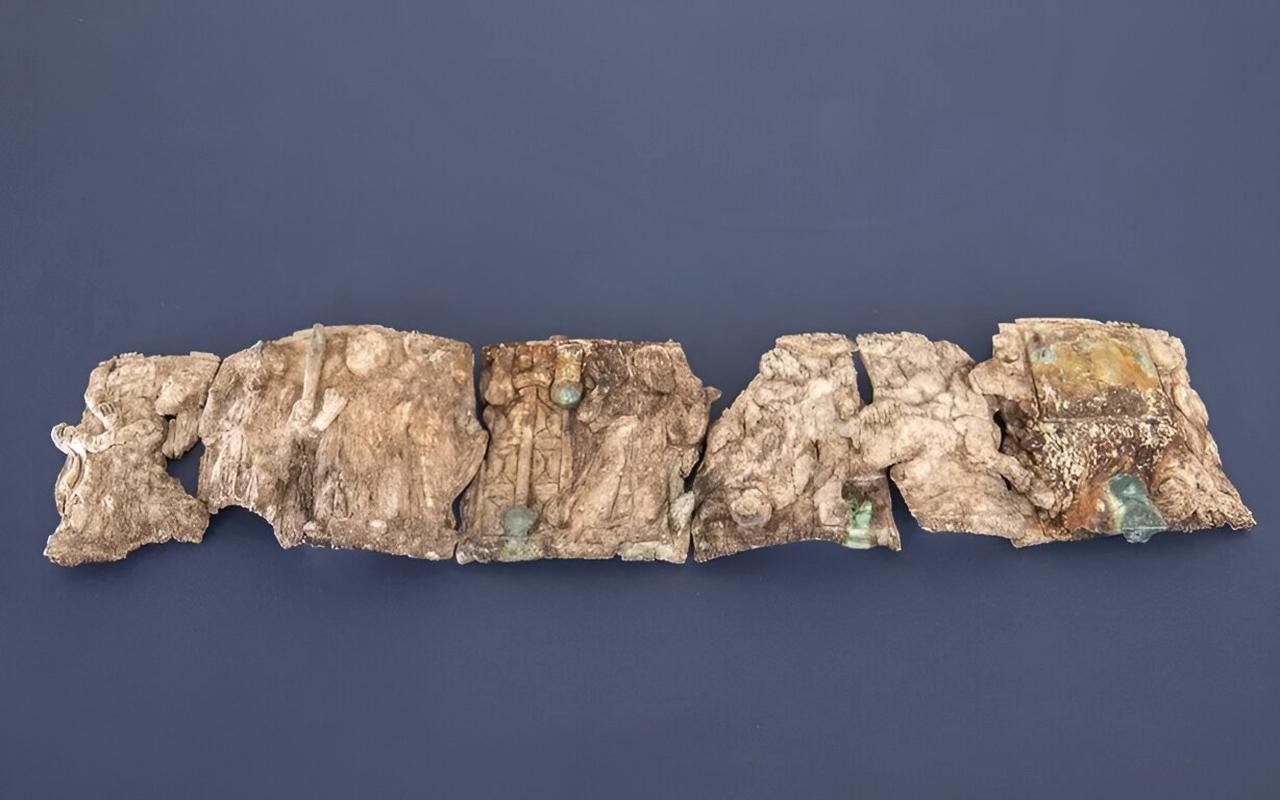Archaeologists from the University of Innsbruck have unearthed a 1,500-year-old reliquary from a late antique hilltop settlement in Irschen, southern Austria.
 Individual fragments of the 1,500-year-old pyx arranged in the round on a white background. Credit: University of Innsbruck
Individual fragments of the 1,500-year-old pyx arranged in the round on a white background. Credit: University of Innsbruck
The hilltop settlement, located on the summit of Burgbichl, rises about 170 meters above the Drava Valley. Established in the late 3rd or early 4th century when the region was part of the Roman Empire, the settlement was abandoned around 610 CE. This abandonment coincided with the Battle of Aguntum, where Slavic forces defeated the local Germanic Baiuvarii peoples, marking the end of the settlement’s connection to the Mediterranean world and its Christian heritage.
Since 2016, the University of Innsbruck’s archaeological team, led by Gerald Grabherr, has been excavating the site. They uncovered the remains of several dwellings, two Christian churches, a cistern, and numerous personal belongings of the settlement’s former inhabitants. Among these findings, the most remarkable discovery was made in August 2022, during the excavation of an early Christian church.
Hidden beneath the altar in a side chapel, the researchers found a marble shrine measuring approximately 20 by 30 centimeters. Within this shrine lay the fragmented remains of an ivory reliquary box, known as a pyx, which was richly decorated with Christian motifs. Pyxes are small round containers traditionally used to carry holy relics or Communion wafers and are considered highly sacred in Christian traditions.
 The individual fragments of the ivory pyx arranged in a row. Credit: University of Innsbruck
The individual fragments of the ivory pyx arranged in a row. Credit: University of Innsbruck
The discovery of this pyx is particularly significant due to its rarity. “We know of around 40 ivory boxes of this kind worldwide, and the last time one of these was found during excavations was around 100 years ago,” said Gerald Grabherr in a press release. Typically, such artifacts are preserved in cathedral treasuries or museums, making the find at Irschen unique as it was discovered in its original archaeological context.
The pyx, although heavily fragmented, displays intricate carvings depicting various biblical scenes. One side features a depiction of a mountain with a man turning his gaze away, while a hand extends from the heavens above him. Grabherr explains, “This is the typical depiction of the handing over of the laws to Moses on Mount Sinai, the beginning of the covenant between God and man from the Old Testament.” Another section shows a man riding a chariot with two horses, being pulled up into heaven by a hand from the clouds, which is interpreted as the ascension of Christ. “The depiction of the Ascension of Christ with a so-called biga, a two-horse chariot, is very special and previously unknown,” added Grabherr.
The condition of the pyx posed significant challenges for the conservation team. Ulrike Töchterle, head of the restoration workshop at Innsbruck said: “Ivory, especially stored on the ground like in the marble shrine, absorbs moisture from its surroundings and is very soft and easily damaged in this state.” The high humidity within the marble shrine led to a prolonged and careful drying process to prevent further damage. Over the past two years, Töchterle’s team has conserved the individual pieces of the pyx sufficiently for scientific analysis.
Researchers are conducting stable isotope analyses to determine the origin of the ivory and the marble. They are also examining the metal components and adhesives used in the pyx’s construction. Additionally, small wooden fragments found within the marble box are being analyzed to ascertain their purpose, whether as part of the pyx’s clasp or as a relic.
The settlement at Burgbichl, abandoned since around 610 CE, had largely been forgotten until these recent excavations. This extraordinary find reveals the deep religious and cultural connections of the late antique period in this region of Austria.
More information: University of Innsbruck





